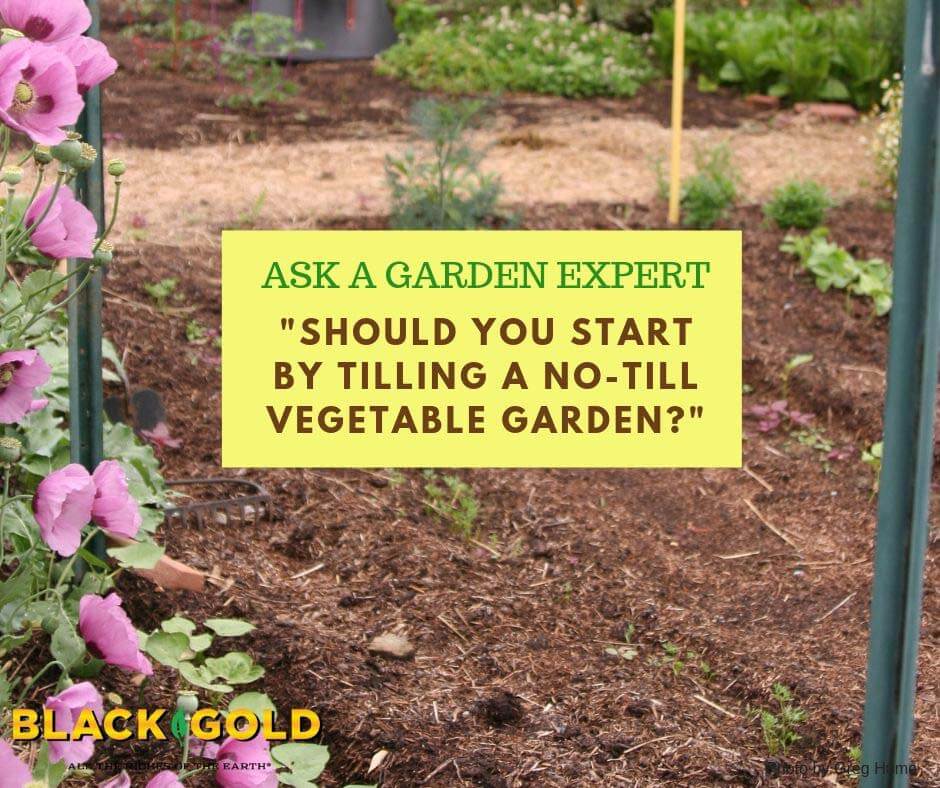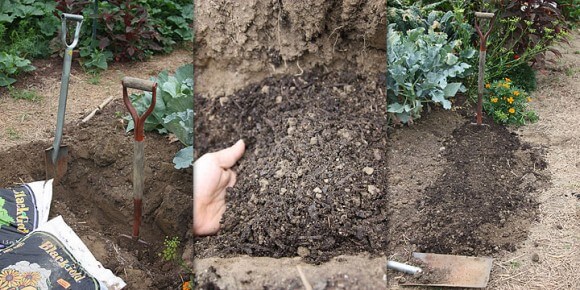
“When creating no-till garden beds, do you think it’s best to till once and never again, or just use a never till method?” Question from Anthony of Bentonville, Arkansas
Answer: There are lots of benefits to going no-till with vegetable beds, especially when it comes to weed and weed seed control and the encouragement of soil beneficials. For me, creating a good no-till garden started with a big investment. I dug deep, enriched my beds to the hilt, and lifted and bermed my planting areas. (Lifting soil is especially important if your garden’s topography is low.)
Here’s my five-step method for starting a no-till garden.
- Till deeply: Creating a good vegetable bed is all about adding lofty tilth and good fertility for extra drainage and deep rooting. In my opinion, you cannot accomplish this without initial tilling. For excellent no-till bed longevity, you have to start by lifting and aerating your soil as deeply as possible.
- Double dig: Move the lofty tilled topsoil aside and double dig areas that you plan to plant. This is easier if your beds are on the smaller end, but at bare minimum, double dig the areas where you plan to grow root crops. (Click here to read more about double digging.)
- Amend all of your backfill: Amendments rich in organic matter and microbes are essential for the longterm health of your garden. Work as much good stuff, like Black Gold compost, earthworm castings, peat moss, and even composted manure, into your backfill as possible and till it in.
- Define pathways, fill, and berm: If you have a large or relatively large garden space, it’s nice to establish paths for easy garden access and harvest. Most gardeners choose a row or block design. I always like my pathways to stand a bit lower than my beds to encourage deep rooting, so I berm up fill in the bed areas.
- Cover: As a final step, I cover my walkways with black & white newspaper or non-waxed corrugated cardboard and cover the paper with a thick layer of seed-free grass clippings, straw, or even pine straw. You can even plant nitrogen-fixing clover in the walkways. Then I add a thick layer of compost along the top of the beds to detur weeds.
Each year, I clean up and refresh the walkways and add fresh compost as a mulch. Invest in your no-till garden like this in the beginning, and you will be wowed by the results.
Happy gardening!
Jessie Keith
Black Gold Horticulturist




